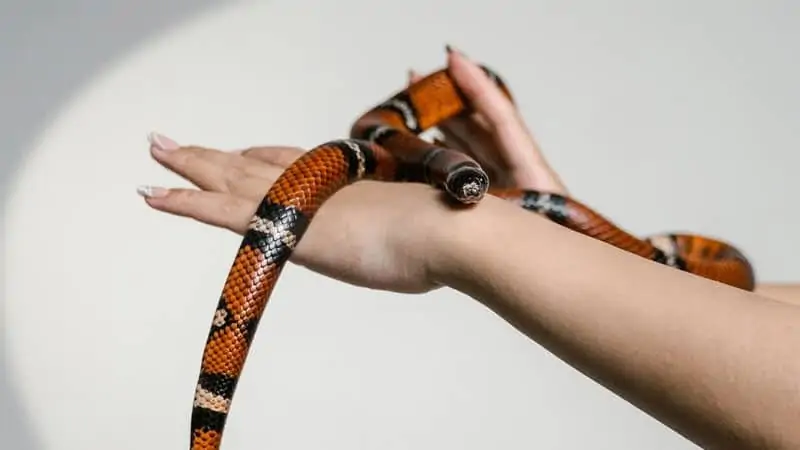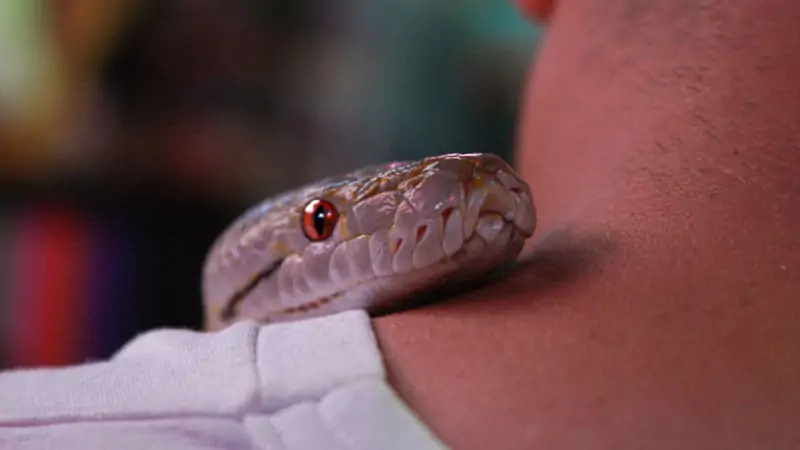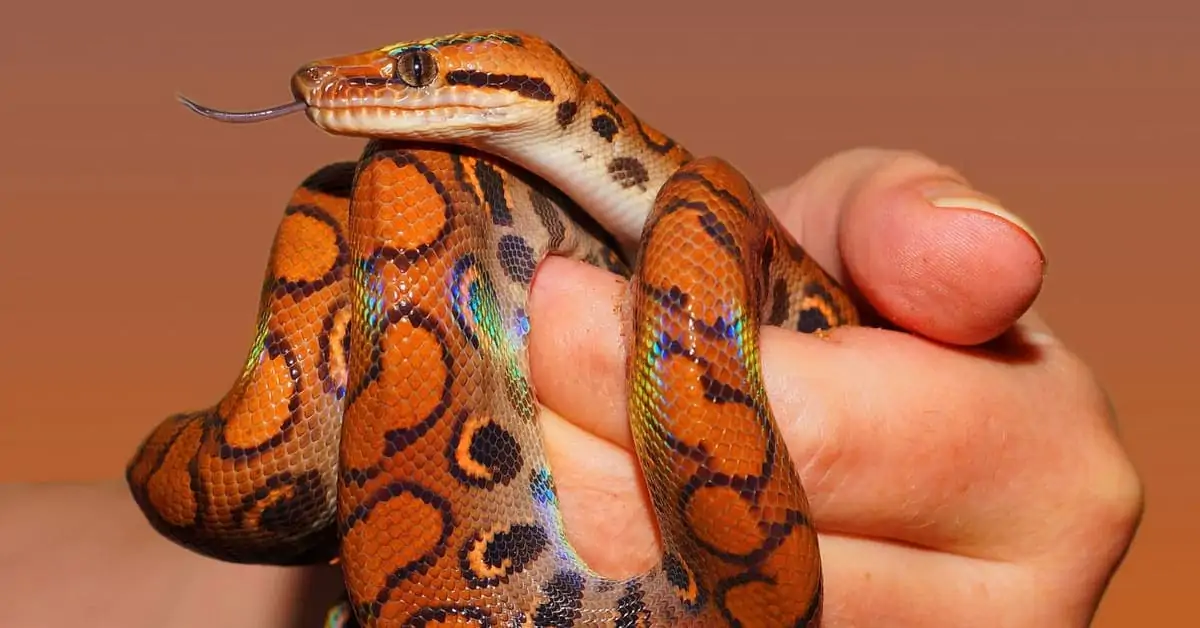Snakes are fascinating creatures and make for great low-maintenance pets. They don’t make any noise, they typically don’t trigger allergies, and don’t need daily feeding.
If you want to travel long distances and can’t leave your snake behind, you will need a sturdy and comfortable carrier. Ensure the carrier is warm and dark. Transport your snake inside a pillow case where it’s dark and cozy. Protect it from outside light, sounds, and smells.
Whether you’re buying a pet from a far-off place or relocating homes, you may want to bring your snake with you. Here are the dos and don’ts of traveling with a snake.
How Do You Travel with Snakes?
The key to successful travel is to avoid injury and stress. With that in mind, here is the step by step of traveling with snakes.
Transfer
First you will need to transfer your snake from its usual terrarium to a transport container. From the terrarium, take out any rocks, twigs, and other objects which may accidentally hurt the snake. Take the snake out in very slow movements to avoid any jerking reactions.
Breathable Sack

Once the snake is out of the terrarium, you need to quickly secure it inside a breathable pillowcase. This works for medium-sized and big snakes. For small snakes, find a smaller cloth or sack.
Snakes feel comfortable in small dark spaces. So, the pillow case or sack will be perfect. Tie a knot very tightly at the top. Snakes are adept escape artists. For double security, use a rope or string to tie just below the knot.
Carrier
You will need a strong-sided carrier such as a cooler picnic box or polystyrene box. The box protects the snake from falling objects and any impact with hard or sharp objects. The extra protection is necessary in case of a car accident, objects moving back and forth in the storage area, or due to turbulence in a plane’s cargo hold.
There are snake travel carriers which are unbreakable and offer all round ventilation. If you’re using any other sealable container, you can drill holes on the sides to let in fresh air. Ensure the holes are not big enough for the snake to slip through.
Line the bottom of the carrier with some towels to protect your snake from slipping. If your snake needs a humid environment, use wet or moist towels. You can also line the sides with cloth or furniture pads for extra protection.
Temperature
Depending on weather conditions and the species of the snake, you may need to warm the carrier. There are several ways to keep the inside of the carrier warm:
- Use a hot water bottle for short trips.
- Add extra blankets inside and outside to insulate the carrier from cold temperatures.
- Use heat packs and hand warmers to generate heat for long distance journeys.
Blanket Cover
Once the snake is safe inside the sealed carrier, secure the carrier with straps or ropes. You don’t want the carrier to be thrown against the sides of the transport means. Once secure, cover the carrier with blankets on all sides leaving enough gaps for air to stream through.
Blankets help to keep the carrier warm enough for the snake. Additionally, the blankets block out the strange sounds, smells, and light from the new world you’re passing through. The snake will be calmer and less stressed if it doesn’t notice all those changes.
Also, the blanket protects the snake from seeing sudden movements as you zoom past. Sudden movements can frighten snakes and lead them into deep stress.
Food
Most snakes can stay days, even weeks, without eating. Feed your snake two days before the start of your journey, then don’t feed until a day after you arrive at your destination. Avoid transporting your snake when it has a full stomach otherwise the snake will be uneasy and restless throughout the journey
When you reach your destination, give your snake time to acclimatize to its new environment before feeding. A day is usually sufficient for the snake to make the new place its home.
What Not to Do
- Once you put the snake inside the carrier, don’t open the carrier again until you reach your destination. Give the snake the alone-time it needs to get used to its little ‘den’.
- Don’t travel during peak hours. Rush hour travel is usually noisy. You don’t want to keep startling your snake.
- Don’t make too many pit stops. For the sake of your snake, you want the journey to last as short as possible.
How Do You Travel Long Distance With A Snake?

When you’re travelling long distance, take extra measures to keep the temperature stable inside the carrier. You should travel with a thermometer gun which uses a laser pointer to read temperatures from a distance. You want to monitor temperature changes without having to open the carrier unnecessarily.
Do Snakes Like to Travel?
Snakes can get stressed due to travel and when stressed they get sick easily. Extreme stress often leads to death. However, when handled carefully, they can get through travel without any signs of stress or trauma.
Once you arrive at your destination, keep a keen eye out for any signs of sickness or abnormal behavior. Signs to watch out for include:
- Change in appetite: Is the snake ignoring its food?
- Change in waste: Is the snake straining to eliminate? Is the waste significantly less or more? Are there changes in the color and consistency of the fecal matter?
- Abnormal discharge: Is there any discharge coming out of the snake’s eyes, nose, or mouth?
- Abnormal shedding: Have you noticed any erratic, slowed down, or increased shedding? Is the shedding not in one piece or has holes?
- Dull skin: Has the skin lost its luster? Does it seem duller than usual?
- Stargazing: Is your snake showing signs of stiffness or difficulty in moving?
If you noticed any of these signs or other abnormal signs, take the snake to the vet immediately. Often the stress goes away in a few days. However, if you delay and the stress sets in, it may be irreversible and your snake may soon die.

